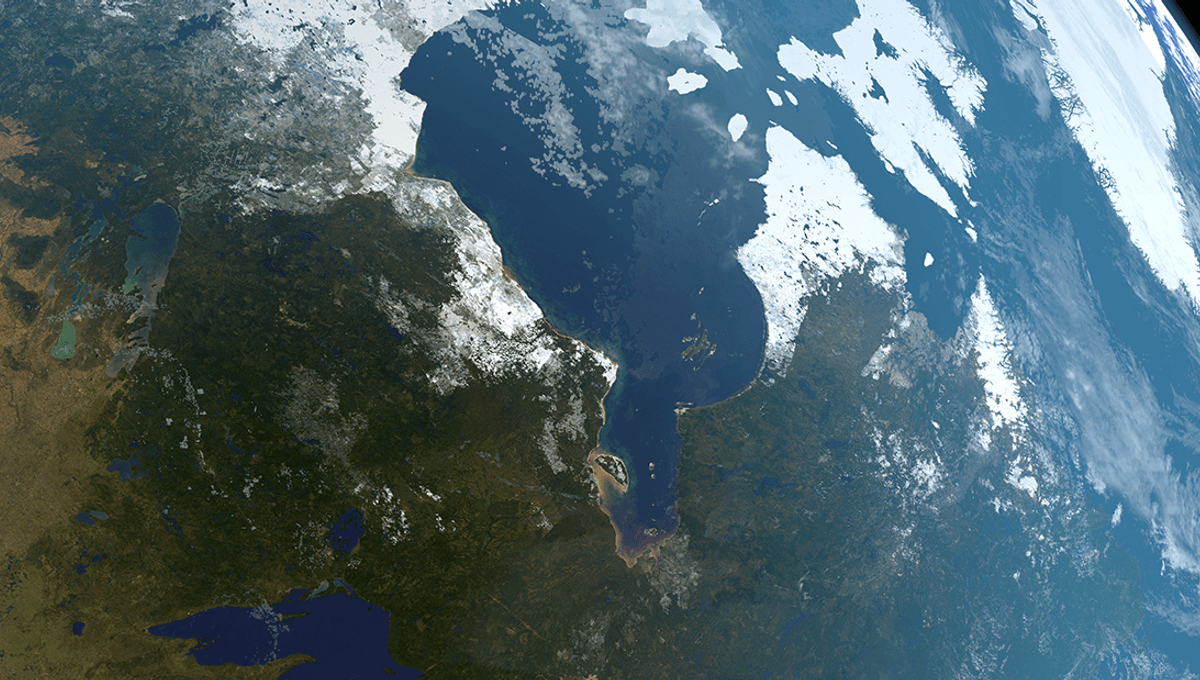
In the Hudson Bay region of Canada, you can experience a strange phenomenon; weighing ever so slightly less than you do anywhere else in the world. It’s not much of a party trick, you would weigh about four-thousandths of a percent less than at the average location on the planet, but the cause is quite fun. You see, the Hudson Bay sits on top of a gravity anomaly.
Gravity anomalies are where an object observed in free fall accelerates at a rate different from the rate models of gravity for that location would predict.
At the Puerto Rico Trench, gravity has been found to be -380 milliGal, making it the biggest negative gravity anomaly on Earth. Another in the Indian Ocean is where gravity has been found to be lowest, compared to what was expected.
Though we may think of the Earth as having a sort of uniform gravity wherever you are on the planet, this is not the case. Just as the Moon exerts more gravity on the Earth than the much larger Jupiter because of the distances involved, more gravity is exerted on you when you are closer to more mass. And Earth’s mass is not uniform.
For starters, the Earth bulges at the equator thanks to the rotation of the Earth and centrifugal force. As a result, you weigh slightly more at the North Pole where you are closer to the bulk of the Earth’s mass than you do at the Equator, where you are further from it.
Then, there are areas where you are above more or less mass than scientists predicted, making it a gravity anomaly. At the Puerto Rico Trench, for example, the ocean was found to dip ever so slightly due to unexpectedly high gravity. Investigating the anomaly in 1977, geophysicist Peter Molnar found that previous models of gravity had assumed that the thickness of Earth’s crust (the lithosphere) was pretty uniform. Looking at the area, he realized that wasn’t the case, and that the anomaly was likely caused by a large and dense “hanging flap” of the Atlantic lithosphere underneath the trench.
At Hudson Bay the problem is the opposite, the weakened gravity is caused by missing mass. This is likely caused by events during the last Ice Age, as the Laurentide Ice Sheet that covered most of Canada pushed through the country and shifted dense rock out of its way, compressing it down below. When the ice sheet melted, it left the area to slowly recover, but with missing mass.
However, this only accounts for around 25-45 percent of the gravity anomaly seen at Hudson Bay, according to an analysis of the Gravity Recovery and Climate Experiment (GRACE) satellite data. The remaining anomaly is likely accounted for by activity well below the Earth’s surface. The rising and falling of magma creates convection currents, which can drag down continental plates, decreasing the mass in the area, all to make you weigh slightly less in Hudson Bay.
Source Link: Hudson Bay Is Sitting On Top Of A Gravity Anomaly